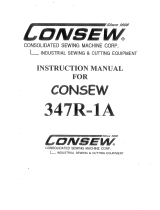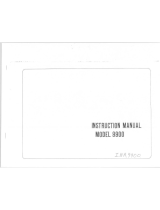
TAB OF NTENTS
1. KNOWING YOUR SEWING MACHINE
identlflca_ _art ........ ,..................................... 2 - 3
Setting up your machine ........ ._............................... 4
Foot 0ontrol, Power/light switch,
Needles, Needle, thread and fabric chart,,.,., ............ .. 8
Changingneedle, Pmeserfoot lever,
Pin.ration for threading .... ,.... ,........... '.,................. 9
Wlnd"Ing'the bobbin, .............................................. !0
T_d[ng the _bln _se ........ ,..... ,....... ...... ,......... 11
Threading top thrud,, ............ ,............. ,................. 12
Piddng up bobbinthread ......... ,......... ,......... _.......... 13
Presserfeet, Changingp_r feet, F_ €_er plate..... 14
StlWh _, StJ_h length control.......................... 15
Stitch width/_le positioncontrot, Reveresstitch
lever, Buttonholecontrol ............ ,........................... 16
2. STARTING TO SEW ............................................ ,.19
Machine letting chart ........................................... :.20
Stratgh't stitching ... ......................................... 21 24
Thiee needle _tions, Starting to sew and back
tacking, Turning a _usm corner, Rsmovinglabric,
Top-stitching, Darning, Temporary sewingby
machine, Zipper application-cording
Zigzag lititahing.. ........ ,.................................... 25- 28
Ove_ng, Satin stitching, Bar tackin_i,
AppUqustr_, Embroidery, Monogramming,
Button _ng
Adjustingiitltcl_length, Stmtght stretch stitch,
Rick_-,,;;rit_stretch stitch, Smocking s_toh stitch,
Elastiostm_ stitch, Over©ut stretch stltch_
i_h stitch, Patchings_tch wtitch,
Overio_ stretch stitch, Elasticedge stretchstitch .
Wham t_ use which stretch stitch: A check-chart ......... 40
Hints on sewing different fsbdcs,........................... ,,.4!
Buttonhole roaring.., ....................................... 42: 47
Decorativeembroiderydesigns ........................... 48 50
3, CARING FORTHE MACHINE
4. CHECKING PER_RMANCE PROBLEMS, ............ 54 -





















